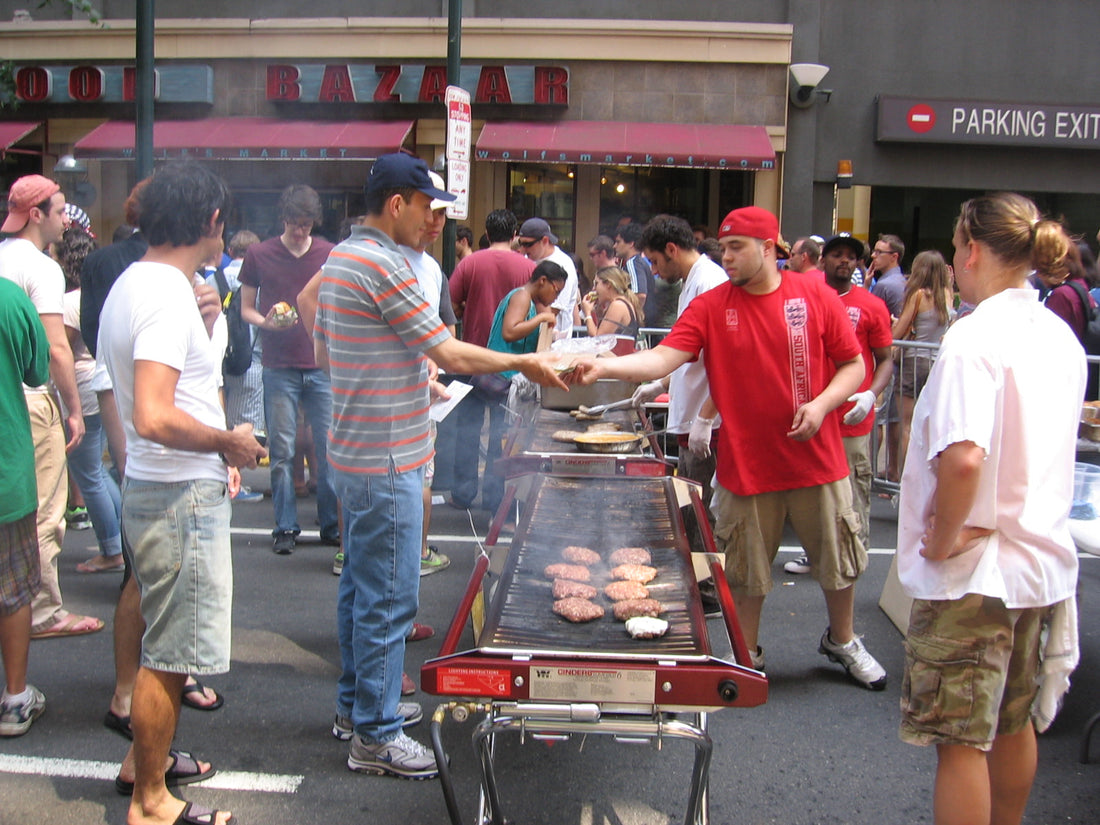
Savvy Safety Tips for Street Food Vendors
Rob Shuttleworth, Chief Executive of UKLPG published an article on LinkedIn on March 3rd. It contains some of the best safety advice we’ve seen for a long time and we wanted to share it with you……….
Read the full article here: https://www.liquidgasuk.org/news/blog/2017/savvy-safety-tips-for-street-food-vendors The popularity of street food has helped fuel rapid growth in the outdoor catering sector. UKLPG has teamed up with The Nationwide Caterers Association NCASS to urge operators to keep safety front of mind when storing, transporting, handling and using LPG cylinders. Safety is focused on three key areas: cylinders, regulators and hoses. Cylinders- A full cylinder is heavy so care needs to be taken when lifting - use a trolley where possible
- Always transport and store cylinders with the valve at the top
- When not in use, store cylinders outside in a well-ventilated location
- If cylinders are kept in an area where people walk by, they should be restrained to stop them falling over and not blocking escape routes
- Never use propane cylinders indoors (butane cylinders can only be used indoors if the LPG appliance is specifically designed for use indoors, such as a cabinet heater)
- Empty cylinders should be returned to the nearest stockist – information is available on the UKLPG website
- Regulators are necessary to reduce the pressure of LPG in the cylinder to the much lower pressure used by the appliance
- Regulators come in two variations; screwed connectors and quick connect - the correct type of regulator must be used
- To tighten screwed connectors, remember that most are left-handed and tighten in the opposite direction to a normal screw
- Never overtighten or force fit a regulator or its mechanism
- Always protect regulators from the rain
- Regulators which are not fitted directly to the cylinder outlet, and any changeover valves, should be secured at a position higher than the cylinder outlet valve
- If regulators are more than 10 years old or show signs of wear or damage, replace them
- Check that regulators are clearly marked with either BS3016, BS EN16129 or BS EN12864 to ensure quality and safety standards have been met. For some commercial equipment or installations, regulators marked with BS EN13875 or BS EN13876 may be required
- To ensure quality and safety standards have been met, check that hoses are clearly marked BS3212 or BSEN1763, or stainless steel convoluted hoses are marked EN10380
- If the outlet pressure of the regulator exceeds 50 mbar, hoses should also be clearly marked as ‘High Pressure LPG’
- Hose lengths should be as short as possible but long enough that they are not pulled tight
- They must be secured with proper hose clips
- Keep hoses clear of hot surfaces and replace any hose which is more than 10 years old or which shows signs of wear, cracking or damage
- Never connect a natural gas appliance to an LPG supply, or try to improvise or modify your appliance
- Always ensure there is an adequate supply of fresh air where the appliance is located to reduce the build-up of carbon monoxide fumes
- Always follow the instructions issued by the supplier or manufacturer
- With safety front of mind, everyone can enjoy the great atmosphere and food on offer at street food fairs, festivals and fetes
